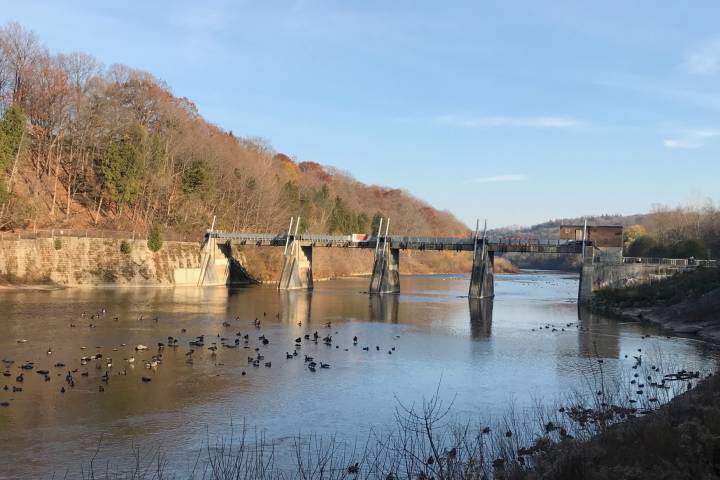The ongoing debate over the future of the Springbank Dam could end this year. Or not.

A new report going before the civic works committee next Tuesday suggests the path towards fixing the dam could be a difficult one.
City staff say there has been an increase in the populations of “numerous important native species of fish, mussels and reptiles” since the failure of the dam. The report says repairing the dam “would lead to habitat loss for a number of endangered and threatened species at risk.
Last month, the Upper Thames River Conservation Authority released 75 baby turtles back into the Thames River. The spiny softshell turtle is one of 18 different species at risk according to the report.
The future of the dam is included in the One River environmental assessment which covers the Thames River from Boler Road Bridge to the Forks of the Thames and Harris Park. The EA ties together the Back to the River revitalization project and the Springbank Dam. Supporters of the Back to the River project, which would revitalize the forks of the Thames River, want the dam fixed to raise water levels.
Robert Huber, president of the Thames River Anglers Association told AM980 the health of the river following the breakdown of the dam doesn’t surprise him.
“This is evidence of 17 years of seeing what the river would like if we had decommissioned the dam, what would have happened,” said Huber.
The city plans on holding public information sessions October 18th and 19th where staff will present three options for the future of the dam — leave it broken, repair it or remove it.
The dam has been a sore point in London since it was damaged in a flood in 2000. Repairs on the dam didn’t begin until 2006 and the issue came to a boiling point in 2008 when one of the steel gates became stuck in the open position during a test.
What followed was a lawsuit by the city against the engineers and designers and a counter-suit against the city. The case wasn’t put to rest until a settlement was agreed to in 2015 that awarded $3.7 million to London.
The settlement allowed Mayor Matt Brown to revisit a campaign promise from his mayoral run in 2014 to fix the dam. Supporters of the Back to the River project, kayakers and canoers support repairing the dam while environmental groups such as WWF Canada, the Thames River Anglers Association and the Chippewas of the Thames First Nation have all called for the dam to be decommissioned.
The report from city staff suggests repairing the dam would be extremely difficult. The quality of the river has improved over the past 17 years and the city would have to get approval from the federal and provincial governments plus multiple conservation authorities in order to move ahead with repairs.
It isn’t known what it would cost the city to repair the dam.
The dam isn’t necessary for flood control and is used for recreational purposes only. The report also states social (e.g. canoeing and rowing) factors are important considerations for dam decision.
“We have an interest from a fishing standpoint but there’s a lot of other people who have weighed in on this that it’s just nicer to be around, whether it smells better during the summer or they like to see people using the river, whether they’re in kayaks or canoers or fishing. That stuff is still happening in the city,” said Huber.
Staff say they will present the three options for the dam to the public during the information sessions along with the pros and cons for each option.
The report doesn’t include a staff recommendation, that won’t be provided until after the public information sessions.
Council is expected to make a decision on the dam before the end of the year.
The civic works committee meets at 4 p.m. on Tuesday.








Comments